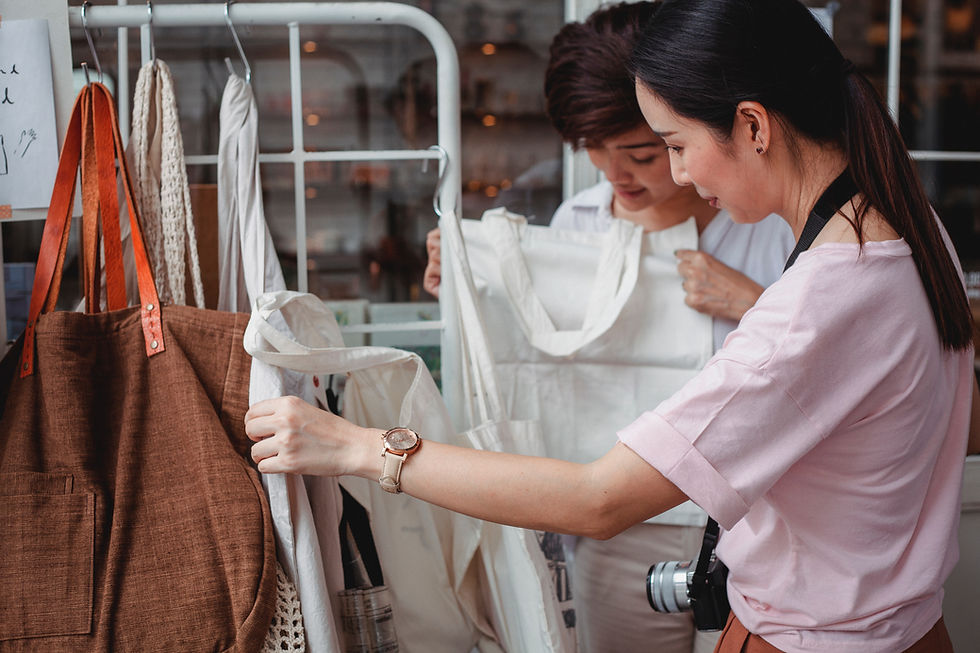Fashion Forward: Aligning the Runway with Sustainable Development Goals
- Aminata Babut
- Jul 28, 2023
- 3 min read

The fashion industry holds tremendous potential to contribute to a sustainable future. With its global influence and widespread reach, the industry has the power to align with and drive progress towards the Sustainable Development Goals (SDGs). The Sustainable Development Goals (SDGs) are a set of 17 global goals adopted by the United Nations in 2015. They provide a comprehensive framework for addressing the world's most pressing social, economic, and environmental challenges. The goals aim to eradicate poverty, protect the planet, and promote peace, prosperity, and well-being for all by 2030. Each goal has specific targets and indicators to track progress, covering areas such as poverty, education, health, gender equality, clean energy, climate action, and more. The SDGs emphasize the need for collaboration and partnerships among governments, businesses, civil society, and individuals to achieve sustainable development on a global scale. By embracing sustainable practices and fostering responsible consumption, the fashion world can become a catalyst for positive change. Let's explore how the fashion industry can align with the SDGs and pave the way towards a more sustainable future.
Goal 5: Gender equality
Gender equality is a significant SDG, and the fashion industry can play a vital role in promoting it. By embracing gender-inclusive practices, ensuring equal opportunities for women in leadership roles, and highlighting diverse body types and identities in fashion campaigns, the industry can challenge traditional norms and promote inclusivity.
Goal 8: Decent work and economic growth
Goal 8 focuses on promoting decent work and economic growth. The fashion industry can contribute by ensuring fair and safe working conditions throughout the supply chain. Ethical sourcing of materials, providing fair wages to garment workers, and supporting sustainable livelihoods are essential aspects of achieving this goal. Collaborating with local communities and supporting artisans can also help preserve traditional craftsmanship and cultural heritage.
Goal 12: Responsible consumption and production
One of the key SDGs that aligns closely with the fashion industry is Goal 12 - Responsible Consumption and Production. The industry can promote sustainable practices through various means, such as implementing eco-friendly manufacturing processes, reducing waste, and adopting circular economy models. Embracing sustainable materials, promoting recycling, and minimizing the use of harmful chemicals are crucial steps towards reducing the environmental impact of fashion production.
Goal 13: Climate action
Climate change is one of the most pressing challenges of our time, and the fashion industry is not immune to its effects. By reducing greenhouse gas emissions, implementing sustainable energy practices, and embracing renewable energy sources, fashion brands can contribute to Goal 13 - Climate Action. Additionally, supporting sustainable fashion choices, such as encouraging conscious consumption and promoting durable, timeless designs, can further contribute to reducing the industry's carbon footprint.
Goal 17: Partnerships for the goals
Collaboration and partnerships are vital for achieving the SDGs. The fashion industry can foster collaborations with NGOs, governments, and other stakeholders to drive sustainable change. By sharing best practices, supporting innovation, and collectively working towards common goals, the industry can amplify its impact and pave the way for a more sustainable future.
Conclusion
The fashion industry has the potential to be a driving force in achieving the SDGs. By aligning with the goals of responsible consumption and production, decent work and economic growth, gender equality, climate action, and partnerships for the goals, the industry can make significant strides towards sustainability. Fashion brands, designers, consumers, and other stakeholders must come together to embrace sustainable practices, support ethical production, and promote responsible consumption. By doing so, we can ensure that fashion becomes a powerful force for positive change, leading us towards a more sustainable and inclusive world. It's time for the fashion industry to step up and lead the way as we move fashion forward, aligned with the Sustainable Development Goals.



Comments